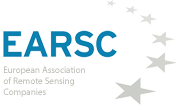Last Wednesday (20th) we held our 2nd workshop looking at the question of certification for the EO services industry. At the 1st workshop in April 2013, we had agreed to take two steps:
- To publish a document which gives a template for products specifications which any EO service provider or their customer can use.
- To trial a low-cost scheme whereby companies can certify their management systems. The EARSC scheme would complement a more stringent ISO9001 certification.
As a result, we have published a DRD (Document Requirement Definition) which provides a template for product specifications and we have trialled the scheme through an open call to EARSC members. The first has been used and tested by the EO4OG projects in generating some 96 EO product sheets for the oil and gas industry.
At the 2nd workshop we heard from the 4 companies which had responded to the call which we put out last year; Ansur, Flyby, Planetek and Stevenson Astrosat all reported their satisfaction at the trial and encouraged it to be implemented on a wider basis. Lloyds Register QA, an auditing body which had been following the trial and the scheme, reported that the scheme is viable and that they are interested to become the first certified auditors for the sector.
We had a useful discussion on their reports which led to the conclusion that we should now make it operational and run by EARSC which we shall now examine further over the next few months.
One issue which we have to look at is whether this scheme should be open only to European companies or whether we should also offer it globally. There are advantages and disadvantages both ways and I should not wish to presume a decision which hopefully will be taken early next year.
It was also agreed to take the first steps towards a scheme to offer some form of validation scheme for products. This is a complex subject but is also starting to be of more interest to customers. Meetings which I participated to either side of the Certification workshop both considered this topic.
The day before, a workshop took place at which the results of 4 studies were presented to representatives of the oil and gas industry. The EO4OG projects have produced the 96 EO product sheets which can help meet the challenges of the O&G sector. These can be picked up and used by any O&G company wishing to buy a service so a process which “validates” the capacity of the EO service provider to meet the specification would make procurement easier.
On the following day I was invited as an advisory board member to hear and comment on the progress of the MELODIES (Maximising the Exploitation of Linked Open Data in Enterprises and Science) project (an FP7 project). It is an interesting and unusual project in its structure which includes 8 different EO applications using data, and especially linked data, from open sources. Given the diversity of these sources the question of provenance of the data and algorithms and the validity of the processing is something being considered as a transversal issue to all 8 applications. I am hoping that the MELODIES work may help us get some insight regarding product validation for our work which is planned to be reported at a 3rd workshop targeted for end 2015.

This page has no comments.